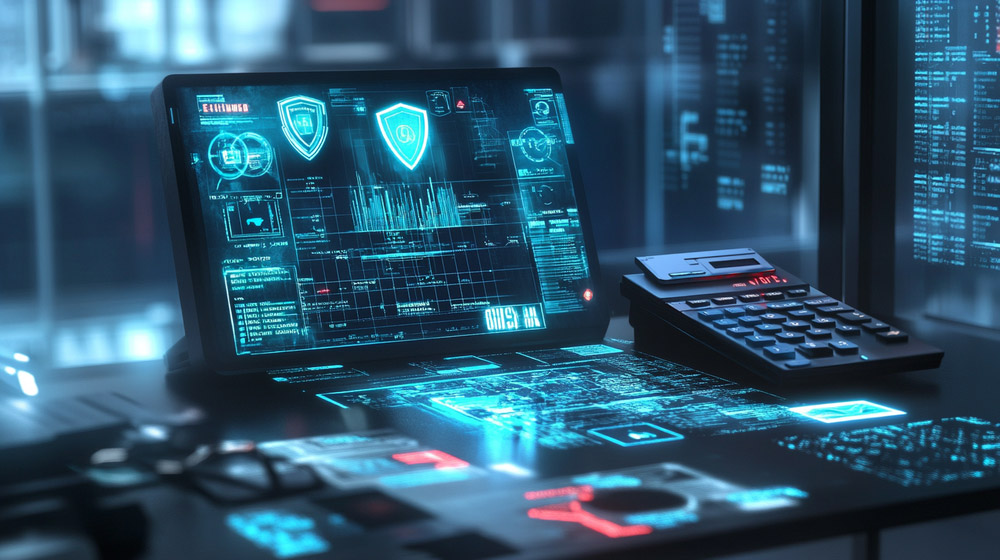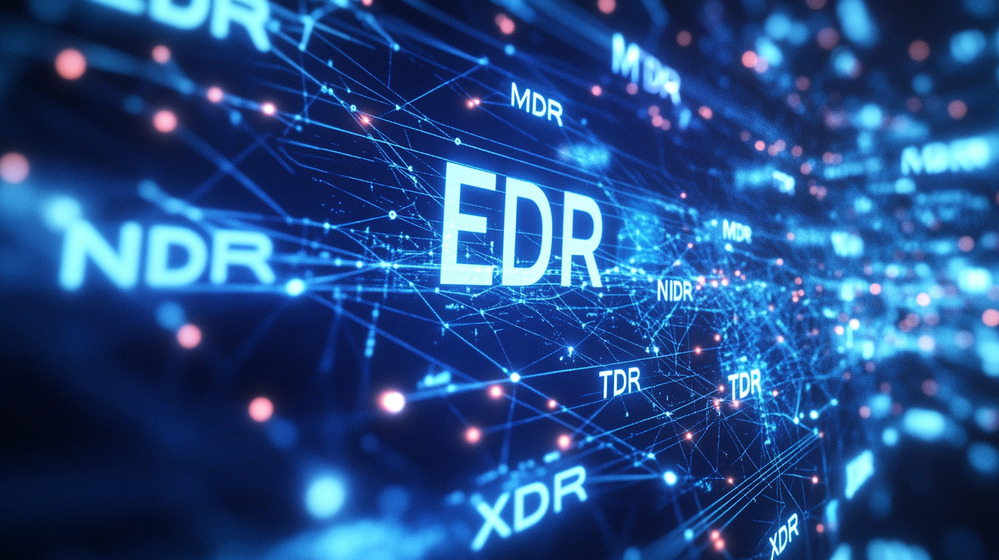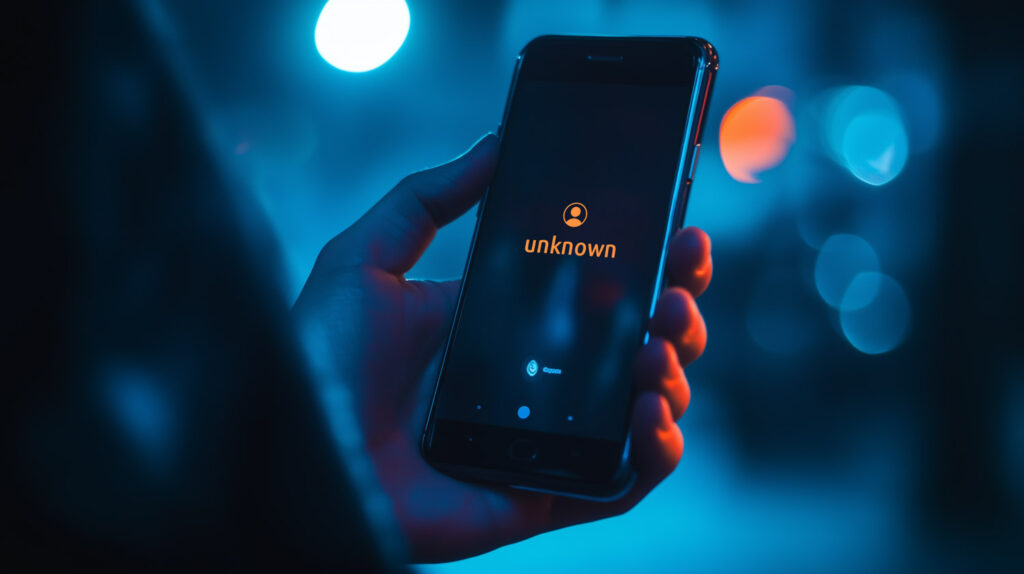Digital security has become one of the most critical needs of our time. As our dependence on technology continues to grow, cyber threats are becoming more complex and multifaceted. It is no longer just about large enterprises but also about the average user who wants to protect their data and devices from potential attacks. To protect ourselves, we need advanced detection and response solutions.
In this article, we will explore five key technologies: EDR, NDR, TDR, XDR, and MDR, and see how they can help us stay safe in the digital world.
Detection and Response Technologies
Imagine this: you work from home and use your computer to complete important tasks. You store sensitive files, such as financial reports, personal notes, and passwords. What would happen if someone gained access to this data? How would your life be affected if these files fell into the wrong hands? These questions are just the beginning, and to answer them, solutions are required that can effectively protect our systems.
Detection and Response solutions offer just that: real-time threat detection and immediate response to prevent catastrophic scenarios. Let’s now look at how each of these technologies can protect you and your business:
| EDR (Endpoint Detection and Response) |
| NDR (Network Detection and Response) |
| TDR (Threat Detection and Response) |
| XDR (Extended Detection and Response) |
| MDR (Managed Detection and Response) |
EDR (Endpoint Detection and Response)

Endpoint Detection and Response (EDR) technology is the first line of defense against cyberattacks. It focuses on endpoints, the devices you use every day: computers, laptops, tablets, and smartphones. These devices are the most vulnerable to attacks, as they are constantly connected to the internet and are used to store and manage sensitive data.
How Does EDR Work?
EDR works like a digital “security camera” for your devices. It installs a small piece of software on each device, which records all activities that take place, from opening files and running programs to communicating with the internet. These recordings are analyzed in real time using sophisticated algorithms and machine learning technologies.
When the system detects something suspicious, such as an attempt to access sensitive files or an unauthorized software installation, it is activated immediately. EDR can alert the security administrator or take automatic measures, such as isolating the device from the rest of the network, to prevent the threat from spreading.
Why is EDR Important?
Imagine you are in a coffee shop working on your laptop or mobile phone, connected to a public Wi-Fi network. Unbeknownst to you, a third party on the same network is trying to access your data. EDR will detect this attempt and take immediate action to prevent it, giving you peace of mind that your sensitive data is safe.
EDR technology is essential for everyone, from large enterprises that want to protect their employees to ordinary users who want to ensure the security of their devices.
Read more about what EDR is here.
NDR (Network Detection and Response)

While EDR focuses on protecting endpoints, NDR (Network Detection and Response) takes on the task of shielding your network. The network is the heart of your digital activity – it’s what connects your devices, allows data to flow, and connects to the internet.
How Does NDR Work?
NDR installs sensors at strategic points in your network, either physically or virtually. These sensors monitor your network traffic in real-time, capturing and analyzing data as it travels to its destination. NDR algorithms analyze the traffic to detect anomalies or unauthorized activity, such as the use of unusual ports and protocols.
When something suspicious is detected, NDR immediately triggers alerts or can take automatic action, such as reducing traffic or isolating the infected device. This allows the business or user to react quickly and effectively, ensuring that the threat does not spread.
Why is NDR Important?
Imagine having numerous connected devices in your home, from smart TVs and security systems to IoT devices like thermostats and smart lights. If someone gains access to your network, they can track your movements or even remotely control your devices. NDR protects these connected devices and your network itself by detecting and preventing such intrusion attempts.
For businesses managing complex networks with numerous connected devices, NDR offers the necessary visibility and control they need to ensure everything remains secure.
Read more about what NDR is here.
TDR (Threat Detection and Response)

Threat Detection and Response (TDR) is a technology that provides a more comprehensive approach to threat detection and response. While EDR focuses on devices and NDR on the network, TDR combines data from multiple sources to provide a holistic view of the security situation.
How Does TDR Work?
TDR acts as a proactive sentinel that doesn’t just record every activity but focuses on the most critical and potentially dangerous activities. TDR collects data from your systems and devices, combining it with network intelligence to detect threats that may not be detected by standalone technologies.
When suspicious activity is detected, TDR triggers alerts and offers threat analysis, allowing you to take immediate action. TDR reduces the unnecessary “noise” that can result from continuous data logging, focusing only on what matters to your security.
Why is TDR Important?
Let’s imagine that you run a small business with multiple computers and connected devices. Without TDR, it would be difficult to spot suspicious activity that might indicate an impending attack. This way, you won’t be able to take the necessary measures to prevent sensitive information from leaking. TDR enables you to have a comprehensive understanding of your business security, identifying threats before they escalate into serious incidents.
Read more about what TDR is here.
XDR (Extended Detection and Response)

XDR (Extended Detection and Response) is the next generation of Detection and Response solutions, offering a unified approach that combines the benefits of EDR, NDR, and TDR into one platform. XDR is not limited to devices or the network. It monitors all aspects of your digital infrastructure.
How Does XDR Work?
XDR collects and correlates data from multiple sources – endpoints (PCs, tablets, mobile phones), networks, and cloud applications – and delivers comprehensive security. Rather than simply monitoring each individual element, XDR combines all of this data to detect complex threats that may not be detected by separate systems.
For example, if a cybercriminal attempts to gain access to your network through a security breach at an endpoint, XDR will detect that activity and correlate it with other activity on the network. This enables more comprehensive and effective threat detection and response.
Why is XDR Important?
XDR’s comprehensive approach makes it ideal for businesses that want to ensure every aspect of their digital infrastructure is protected. XDR provides the ability to monitor EVERYTHING – from device and network activity to the applications used in your business.
Read more about what XDR is here.
MDR (Managed Detection and Response)

MDR (Managed Detection and Response) is the ideal solution for businesses that want to outsource their security management to external experts. Instead of having to monitor and manage complex security technologies yourself, TicTac takes over this task completely, ensuring that your business remains protected at all times.
How Does MDR Work?
MDR offers 24/7 monitoring and management of your security technologies – whether they are EDR, NDR, TDR, XDR, or any combination thereof. Our specialized teams leverage the latest technologies to detect and respond to threats. Whether it’s monitoring your network, protecting your devices, or comprehensively managing your security systems, we take care of it all!
In the event a threat is detected, we take immediate action, implementing the appropriate measures to neutralize it. We constantly inform you about the actions taken and the measures taken, giving you peace of mind for your own safety and that of your business.
Why is MDR Important?
For those who lack the time, resources, or expertise to manage their security in-house, MDR is
the ideal solution. With MDR, we ensure the uninterrupted protection of your systems, allowing you to focus solely on your business activities.
You choose the security technologies that best suit your needs, and we take care of their management, ensuring that your business remains secure.
Read more about what MDR is here.
Which Technology Is Right for You?
After this analysis, you may wonder which of these technologies is best suited for you or your business. The answer depends on your specific needs and the level of protection you require.
- EDR: Ideal for protecting your personal devices from malicious attacks.
- NDR: Suitable for those who want complete control and monitoring of their network.
- TDR: A more comprehensive solution for proactive threat detection across your entire infrastructure.
- XDR: For those looking for the ultimate security solution that covers every aspect of their digital life.
- MDR: Ideal for businesses that prefer to outsource security management to external experts.
It is important to choose the solution that best meets your needs, taking into account the size of your business, the number of devices you use, and the level of risk you may face.
Don’t Leave Your Safety to Luck
If you haven’t adopted any of these technologies yet, know that with each passing day, your data and systems are exposed to risk. Cybercriminals never stop looking for new ways to compromise your systems. Don’t wait to be the next victim. Protect yourself and your business today before it’s too late.
Our team is here to help you choose the right solution and ensure the security of your data.
Contact us today and learn how to secure your business, 24 hours a day, 7 days a week.



















